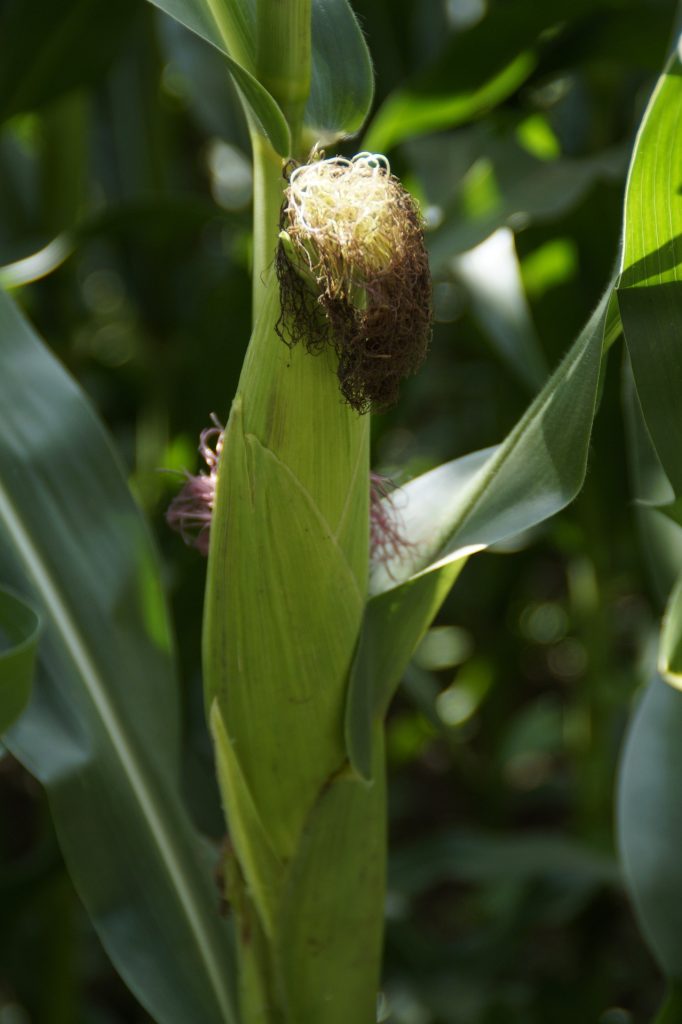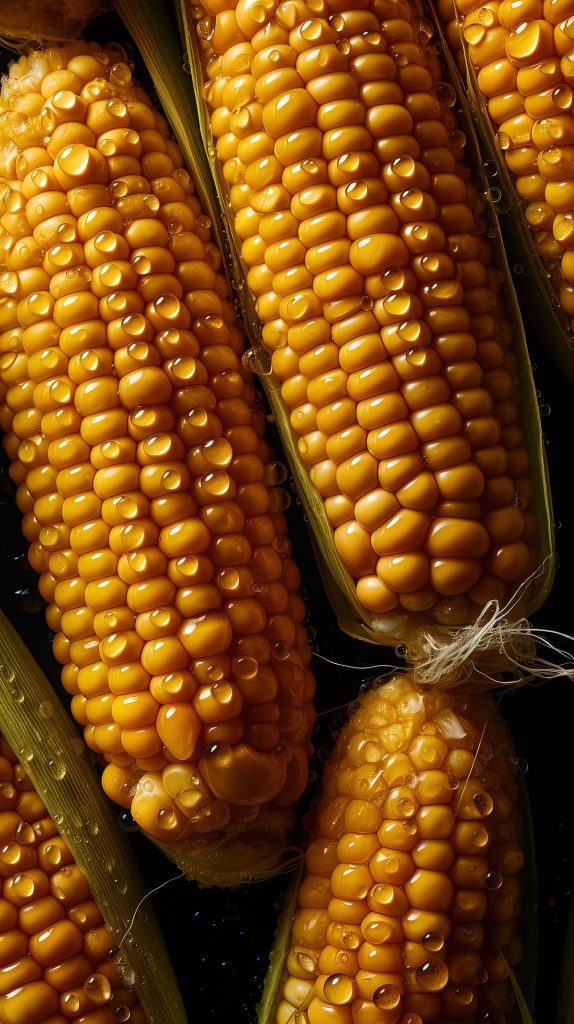Growing Sweet Corn
Sweet corn is a warm season crop requiring average temperatures of 16 to 24 degrees C for optimum growth, and 80 – 110 frost free days from germination to harvest. If your growing space is limited this may not be a suitable crop – grown plants can reach 1.5 – 2 metres and often produce only one to three cobs per plant.
The plant
The plant is monoecious, meaning it produces distinct male and female flowers on the same plant. The flower spike at the top of the plant is the male flower which sheds copious quantities of pollen over several days. The female flower appears as a bunch of silky tassels in the leaf axils. Pollination is by wind.

Site and soil
The site should be open and sunny but not subject to very strong winds which can knock the shallow rooted plants over. The soil should be well structured and rich in organic matter as sweet corn is a moderately heavy feeder.
It is an ideal crop to follow legumes or green manure in a crop rotation and will benefit from the residual nitrogen left in the soil by these plants.
Soil pH should be 6.5 and the addition of lime or dolomite prior to planting will be necessary if it is below 5.5.
Planting
Corn can be either direct sown or transplanted as seedlings in late spring or early summer once the risk of frost has passed. Most books suggest two or three successive plantings at three week intervals. In Canberra, the warm season is not always long enough and later plantings (January) may not succeed.
Sow the seed 20 – 30 mm deep and space the plants 30 cm apart. It is common to plant pairs of seed and if both germinate the weaker seedling is removed. These weaklings can be transplanted if you wish and will usually crop adequately. Seedlings emerge in 4 – 10 days. Plant corn in a block rather than a long row for more even and reliable pollination.

Cultivation
Sweet corn has a moderately high water requirement and needs adequate and even soil moisture throughout the growing season, particularly at the flowering and pollination stages. Avoid overhead watering at flowering as this may disrupt pollination. Pollination is a critical stage and uneven or undeveloped kernels will result if the plant is nutrient or water stressed at this time. Unfavourable weather conditions – either too hot and dry or too wet – may also affect pollination and result in uneven kernel set.
Sweet corn is a shallow rooted plant and deep mulching is useful to help maintain even soil moisture. Drip irrigation under the mulch is the most efficient method of watering. Leaf rolling is a sign of water stress and can occur on hot dry days even if there is sufficient soil moisture.
Pests and diseases
Sweet corn plants are generally untroubled by disease or insect pests. Heliothis caterpillars may be an occasional problem and can damage the tips of ripening cobs. The main pests are mice and birds which can quickly destroy most of the harvest. Netting the crop after flowering will prevent most bird damage.
Harvesting
Cobs are harvested by twisting them off the main stem when the silks have turned brown and dried and the kernels near the tip are well filled and have started to colour. The sheath can be peeled back from the top of the cob to check kernel maturity. Very hot weather near maturity can result in rapid deterioration of the cobs which become tough and starchy. Sweet corn is best eaten as soon as possible after harvest but will keep for a few days if refrigerated.

